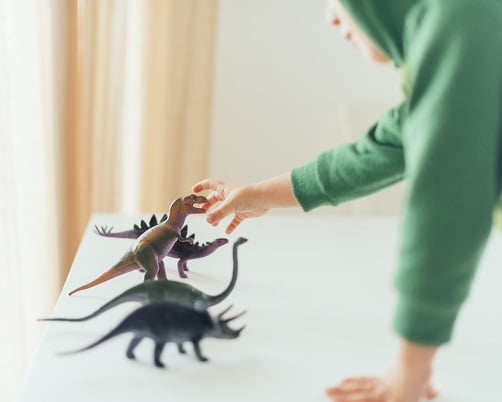A Startling Discovery
Imagine sitting on your porch, enjoying a warm summer evening, when suddenly, you feel tiny legs crawling on your skin. Glancing down, you notice small, delicate creatures crossing your arms or legs. These unexpected visitors are not insects but baby spiders. This encounter can be both fascinating and perplexing. In this article, we will explore why are baby spiders crawling on me, exploring their life cycle, the reasons for their presence, and how to coexist with these miniature arachnids.
The Fascinating World of Baby Spiders
To understand why are baby spiders crawling on me, it’s essential first to explore the life cycle of these arachnids. Unlike insects, spiders are arachnids belonging to a different class of arthropods. They play a crucial role in ecosystems by controlling insect populations and contributing to the balance of nature. Let’s embark on a journey through the stages of a spider’s life.
Section 1: The Spider Life Cycle
1.1. Egg Stage
Web-weaving Arachnids
why are baby spiders crawling on me, Spiders start their lives as eggs laid by their mothers. The egg sacs vary in appearance depending on the spider species. Some are round and papery, while others are silk-wrapped bundles. These sacs are strategically placed in locations protected from the elements and potential predators.
Survival Strategies
In this stage, the survival strategies of spiders come into play. Their silk-producing abilities allow them to create intricate egg sacs. This silk protects the eggs and serves as a means of dispersal. Some spiderlings, once hatched, may even remain inside the sac for a period to ensure their safety.
1.2. Hatching
The Birth of Spiderlings
Once it’s time to hatch, the baby spiders emerge from their egg sacs as spiderlings. These spiderlings are incredibly tiny and may appear almost translucent. As they crawl into the world, they embark on their journeys, searching for food, shelter, and the opportunity to grow.
Tiny But Mighty
Despite their size, these baby spiders possess remarkable abilities. Many species are equipped with silk-spinning capabilities from a very young age. This silk is vital for building webs, creating shelters, and even for a mode of transportation known as ballooning.
Section 2: Spider Dispersal Techniques
2.1. Ballooning
Nature’s Parachutes
Ballooning is a fascinating behaviour exhibited by spiderlings, enabling them to disperse over long distances. These tiny arachnids can travel incredible distances by releasing a silk thread into the air and allowing the wind to carry them. This behaviour is sometimes called “ballooning” because it resembles a spider floating through the sky, much like a balloon.
Traveling the Wind Currents
why are baby spiders crawling on me, Baby spiders use ballooning to find new territories, locate food sources, and escape unfavorable conditions. While this behaviour can result in unexpected encounters with humans, it’s essential to understand that these spiderlings are not intentionally seeking out humans as hosts.
2.2. Phoresy
Hitching Rides with Insects
Another intriguing method of spider dispersal is known as phoresy. Some baby spiders hitch rides on insects, using them as a mode of transportation to new locations. They attach themselves to the insect’s body and, in some cases, even feed on the insect during their journey.
Clever Transportation
Phoresy is a clever survival strategy that can lead to spiderlings accidentally ending up on humans. These encounters are typically harmless, as the spiderlings focus more on finding a suitable habitat than causing harm to humans.
Section 3: Encounters with Baby Spiders
3.1. The Unintended Host
Why Spiders Crawl on You
why are baby spiders crawling on me, The reason baby spiders may crawl on you is not because they are seeking to harm you or use you as a host. Instead, these encounters are accidental. When spiderlings balloon or hitch rides on insects, they have no control over where they land. It’s simply a matter of chance when they end up on a human.
Common Spider Species
The types of baby spiders you might encounter can vary depending on your location. Common species include wolf spiders, garden spiders, and orb-weavers. These spiderlings are usually harmless to humans.
3.2. Safety and Harmlessness
The Benefits of Baby Spiders
It’s essential to recognise that baby spiders, although unexpected guests, can be beneficial. They contribute to pest control by preying on small insects, helping to keep the balance of nature in check. In many cases, their presence can reduce the need for chemical pesticides in and around your home.
Misconceptions about Spider Bites
There are many misconceptions surrounding spider bites and their danger to humans. While some spider species are venomous, most are not harmful to people. Spiderlings are generally less likely to bite, and their venom is typically less potent than adult spiders. If bitten, the effects are usually mild and self-limiting.
Section 4: Preventing Spider Encounters
4.1. Keeping Your Home Spider-Free
Seal Cracks and Holes
When trying to minimise the risk of baby spiders getting into your home, it’s essential to seal any cracks or holes that might provide access points for them. Inspect doors, windows, and walls for potential entryways and address them accordingly.
Regular Cleaning and Decluttering
Regular cleaning and decluttering can also help reduce the likelihood of baby spiders finding a welcoming environment in your home. Eliminating hiding spots and keeping your home tidy can deter these tiny arachnids.
4.2. Outdoor Precautions
Landscaping to Deter Spiders
Outside your home, consider landscaping strategies that discourage spiders from building their webs or hiding places near your entryways. Trim bushes and shrubs, and keep the area around your home well-maintained to create a less hospitable environment for spiders.
Section 5: FAQs
1. Is it common for baby spiders to crawl on people?
Understanding the prevalence of this phenomenon and whether it’s widespread can help alleviate concerns about baby spiders crawling on individuals.
2. Are baby spiders dangerous when they crawl on you?
why are baby spiders crawling on me, Many worry about the potential risks of baby spiders crawling on them. It’s important to clarify whether these encounters pose any harm.
3. What attracts baby spiders to crawl on humans?
Exploring the factors that might attract baby spiders to crawl on people can shed light on the reasons behind these encounters and how to prevent them, if necessary.
Section 6: Conclusion
why are baby spiders crawling on me,, the unexpected presence of baby spiders on your skin can be a fascinating encounter rooted in their natural dispersal methods. These tiny arachnids are not intentionally seeking human hosts but are merely following the course of chance as they navigate the world.
Appreciating the Wonders of Nature
These encounters offer an opportunity to appreciate the wonders of nature and the intricacies of the spider’s life cycle. From their remarkable ability to balloon on the wind to their crucial role in maintaining ecological balance, baby spiders remind us of the intricacies of the natural world.
Coexisting with Baby Spiders
While it’s natural to have concerns about spiders crawling on you, it’s important to remember that most encounters are harmless. Baby spiders cannot typically deliver dangerous bites, and their presence can even benefit us by reducing the need for chemical pest control. By adopting prevention strategies and creating spider-friendly habitats, we can coexist with these tiny arachnids while enjoying their many benefits.
Divine Wordsmith is a spiritual guide and writer, weaving tales of wisdom and insight to inspire inner growth and connection to the divine. Join the journey of self-discovery and enlightenment through the transformative power of words.




